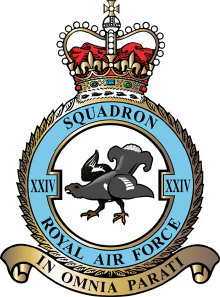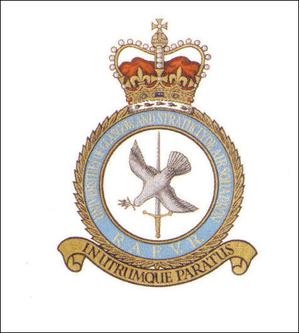Related Research Articles

Lepidoptera is an order of insects that includes butterflies and moths. About 180,000 species of the Lepidoptera are described, in 126 families and 46 superfamilies, 10 percent of the total described species of living organisms. It is one of the most widespread and widely recognizable insect orders in the world. The Lepidoptera show many variations of the basic body structure that have evolved to gain advantages in lifestyle and distribution. Recent estimates suggest the order may have more species than earlier thought, and is among the four most species-rich orders, along with the Hymenoptera, Diptera, and Coleoptera.

Moths are a group of insects that includes all members of the order Lepidoptera that are not butterflies. They were previously classified as suborder Heterocera, but the group is paraphyletic with respect to butterflies and neither subordinate taxa are used modern classifications. Moths make up the vast majority of the order. There are thought to be approximately 160,000 species of moth, many of which have yet to be described. Most species of moth are nocturnal, but there are also crepuscular and diurnal species.

Edmund Brisco "Henry" Ford was a British ecological geneticist. He was a leader among those British biologists who investigated the role of natural selection in nature. As a schoolboy Ford became interested in lepidoptera, the group of insects which includes butterflies and moths. He went on to study the genetics of natural populations, and invented the field of ecological genetics. Ford was awarded the Royal Society's Darwin Medal in 1954. In the wider world his best known work is Butterflies (1945).

The de Havilland DH.82 Tiger Moth is a 1930s British biplane designed by Geoffrey de Havilland and built by the de Havilland Aircraft Company. It was operated by the Royal Air Force (RAF) and other operators as a primary trainer aircraft. In addition to the type's principal use for ab initio training, the Second World War had RAF Tiger Moths operating in other capacities, including maritime surveillance and defensive anti-invasion preparations; some aircraft were even outfitted to function as armed light bombers.

No. 24 Squadron (also known as No. XXIV Squadron) of the Royal Air Force is the Air Mobility Operational Conversion Unit (AMOCU). Based at RAF Brize Norton in Oxfordshire, 24 Squadron is responsible for aircrew training on C-130J Hercules, A400M Atlas and C17 Globemaster. The squadron also delivers engineer training for these aircraft.

The Hepialidae are a family of insects in the lepidopteran order. Moths of this family are often referred to as swift moths or ghost moths.

Aerial topdressing is the aerial application of fertilisers over farmland using agricultural aircraft. It was developed in New Zealand in the 1940s and rapidly adopted elsewhere in the 1950s.

The diamondback moth, sometimes called the cabbage moth, is a moth species of the family Plutellidae and genus Plutella. The small, grayish-brown moth sometimes has a cream-colored band that forms a diamond along its back. The species may have originated in Europe, South Africa, or the Mediterranean region, but it has now spread worldwide.

A Royal Air Force University Air Squadron recruiting within Scotland, Universities of Glasgow and Strathclyde Air Squadron draws its members from six higher education establishments within Glasgow and its surrounding areas.
Broadmeadow Aerodrome was an aerodrome located at District Park, Broadmeadow, Newcastle, Australia, operating from 1929 to 1963.
Paracincia is a genus of moths in the subfamily Arctiinae. The genus was erected by William Dewitt Field in 1950.

Acrobasis is a genus of moths of the family Pyralidae.

King George's Fields is a 28-hectare (69-acre) Site of Borough Importance for Nature Conservation, Grade II, in Monken Hadley in the London Borough of Barnet.
Amplicincia fletcheri is a moth of the subfamily Arctiinae. It was described by William D. Field in 1950. It is found in Jamaica.

Bedfont Lakes Country Park is a 72.5-hectare Local Nature Reserve and Site of Metropolitan Importance for Nature Conservation in Bedfont in the London Borough of Hounslow.
Scirpophaga excerptalis, the white top borer or sugarcane top borer, is a moth in the family Crambidae. It was described by Francis Walker in 1863. It is found in southern Asia from the Indian Subcontinent in the west to southern China in the east, south to New Guinea, possibly Australia and the Solomon Islands.
Several genera of the Lithosiini tribe of lichen moths are placed as incertae sedis due to the uncertainty of their phylogenetic relationships within the tribe.
Maria Alma Solis is a entomologist at the Systematic Entomology Laboratory (SEL) of the Agricultural Research Service of the U.S. Department of Agriculture.

A MONA number, or Hodges number after Ronald W. Hodges, is part of a numbering system for North American moths found north of Mexico in the Continental United States and Canada, as well as the island of Greenland. Introduced in 1983 by Hodges through the publication of Check List of the Lepidoptera of America North of Mexico, the system began an ongoing numeration process in order to compile a list of the over 12,000 moths of North America north of Mexico. The system numbers moths within the same family close together for identification purposes. For example, the species Epimartyria auricrinella begins the numbering system at 0001 while Epimartyria pardella is numbered 0002.
References
- ↑ Savela, Markku. "Amplicincia Field, 1950". Lepidoptera and Some Other Life Forms. Retrieved August 21, 2019.
- Pitkin, Brian & Jenkins, Paul. "Search results Family: Arctiidae". Butterflies and Moths of the World. Natural History Museum, London.